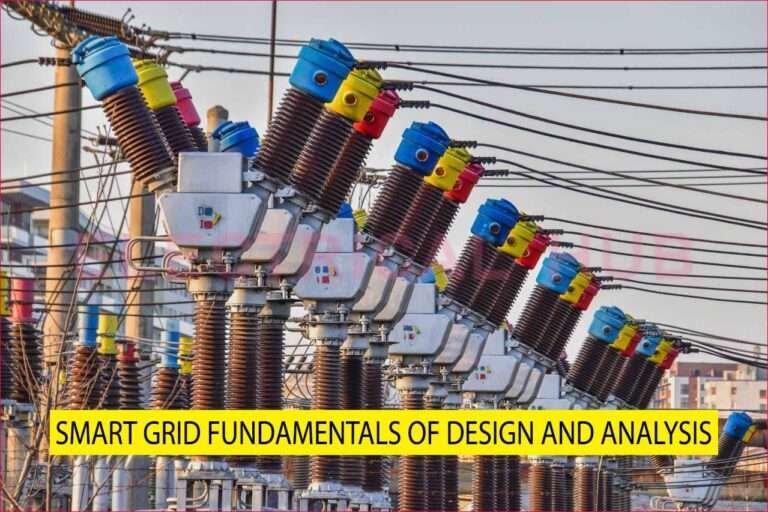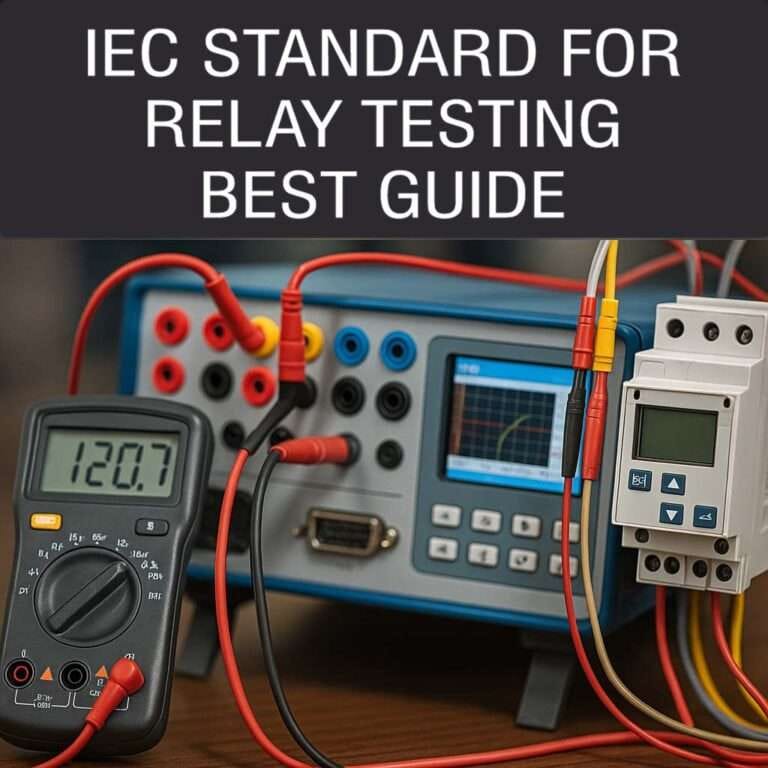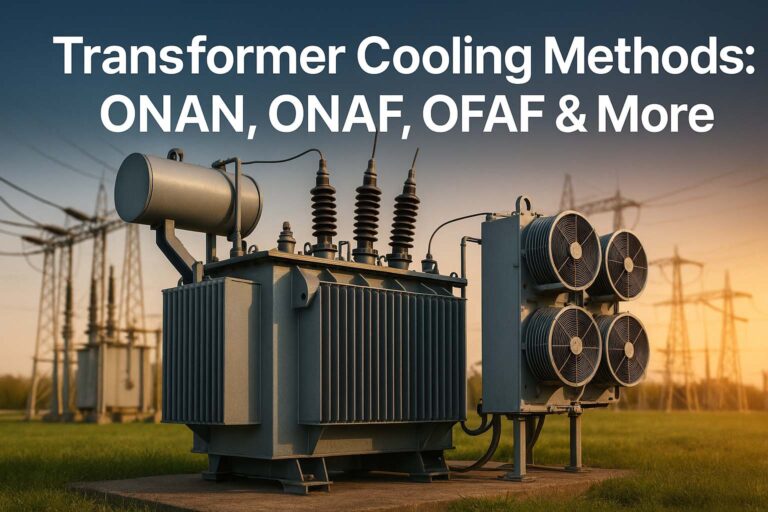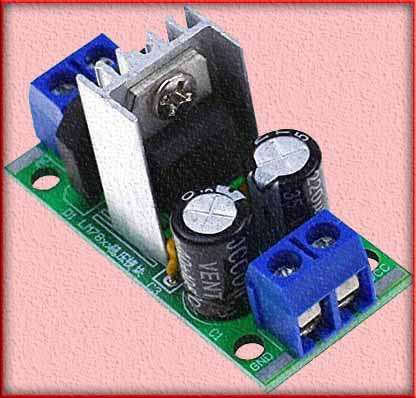Cable VLF Testing Procedure: Step-by-Step Guide for Safe High Voltage Cable Testing
Cable testing is a critical process in power systems to ensure that electrical cables are reliable, safe, and ready for operation. One of the most trusted methods used for high-voltage cable testing is the VLF or Very Low Frequency test.

Table of Contents
The cable VLF testing procedure is widely used for medium and high-voltage cables to detect insulation weaknesses, partial discharges, and other defects that could lead to failure. In this guide, we will explore the complete cable VLF testing procedure step by step, its purpose, benefits, and important safety precautions to follow.
What is Cable VLF Testing?
VLF stands for Very Low Frequency. It refers to an AC voltage test performed at frequencies between 0.01 Hz and 0.1 Hz. This test applies a sinusoidal, cosine rectangular, or square waveform voltage to the cable under test.
Unlike traditional 50 Hz or 60 Hz tests, the VLF test reduces stress on the cable insulation while still simulating operational conditions. The main goal of a cable VLF testing procedure is to verify the dielectric integrity of the cable insulation after installation, repair, or maintenance. It helps detect insulation damage, joint faults, or moisture ingress before the cable is energized.
Know more about IEC Standard for VRLA Battery – Complete Guide to Design, Testing, and Performance
Why Cable VLF Testing is Important
VLF testing ensures that underground and high-voltage cables are safe to operate under real conditions. Over time, cable insulation may deteriorate due to environmental effects, mechanical stress, or aging. Traditional DC testing methods can cause additional insulation damage, but VLF testing applies alternating voltage at low frequency, making it safer and more accurate.
The cable VLF testing procedure is crucial for:
- Detecting insulation defects early
- Reducing unplanned cable failures
- Extending cable life
- Complying with international standards like IEEE 400.2 and IEC 60502
- Ensuring quality control after installation or repair
Equipment Required for Cable VLF Testing
Before performing the test, the following equipment and accessories are required:
| Equipment | Purpose |
|---|---|
| VLF test set | Generates low-frequency AC voltage for the test |
| High-voltage test lead | Connects the VLF source to the test cable |
| Ground lead | Provides safe earthing during the test |
| Discharge stick | Safely discharges residual voltage after test |
| Voltage divider | Measures applied voltage accurately |
| Measuring instruments | Records test values like voltage, current, and leakage |
All equipment must be properly rated for the voltage level of the cable under test. The VLF test set can be of different types such as cosine-rectangular, sinusoidal, or square-wave, depending on the test standard used.
Safety Precautions Before Starting
Safety is the top priority in any cable VLF testing procedure. Before testing begins, follow these steps:
- Ensure the test area is barricaded and properly grounded.
- Verify all cable ends are identified and isolated.
- Confirm that the cable is de-energized and discharged before connection.
- Inspect the VLF test equipment for any visible damage.
- Wear appropriate PPE, including gloves and safety shoes.
Always follow site safety procedures and local regulations for high-voltage testing.
Know more about Capacity Factor vs Load Factor – Key Differences, Formula, and Examples Explained
Step-by-Step Cable VLF Testing Procedure
The following steps describe a standard and practical approach to performing a VLF test on power cables:
Step 1: Preparation and Cable Identification
Start by identifying the cable under test. Confirm that it is disconnected from all live systems and grounded. Verify the rated voltage and length of the cable to select suitable VLF test settings. Ensure that all cable ends, joints, and terminations are properly sealed and accessible for connection.
Step 2: Test Setup and Connections
Connect the VLF test set output terminal to the conductor of the cable under test using a high-voltage lead. Connect the return terminal to the metallic screen or sheath of the cable. The other end of the cable should remain open-circuited and grounded through a high-resistance path.
Ensure the test equipment is placed at a safe distance from the cable, and all personnel are clear from the test zone before energizing.
Step 3: Initial Insulation Resistance Measurement
Before applying the VLF voltage, measure the insulation resistance using a megohmmeter. This helps detect gross insulation faults or moisture before the main test. If the insulation resistance is too low (below 1 GΩ for most medium-voltage cables), investigate and correct the issue before proceeding.
Step 4: Applying Test Voltage
Now apply the VLF voltage gradually. The voltage is typically set as a percentage of the cable’s rated voltage according to the test standard. For example, as per IEEE 400.2, the test voltage for a 11 kV cable (6.35/11 kV) is usually around 1.5U0 to 2.0U0, where U0 is the phase-to-ground voltage.
Know more about IEC Standard for Generator Protection – Key Guidelines and Compliance Requirements
A typical table of test voltages is given below:
| Cable Voltage Rating | Test Voltage (VLF) | Duration |
|---|---|---|
| 6.6 kV | 10 kV (rms) | 30 minutes |
| 11 kV | 15 kV (rms) | 30 minutes |
| 33 kV | 38 kV (rms) | 60 minutes |
| 66 kV | 76 kV (rms) | 60 minutes |
Apply the voltage slowly until the target test level is reached. Maintain this voltage for the specified duration to observe leakage current and insulation performance.
Step 5: Monitoring During Test
While the test is in progress, monitor parameters such as applied voltage, leakage current, and waveform stability. A gradual increase in leakage current or irregular waveform indicates insulation degradation.
Avoid sudden voltage fluctuations during the test. If a breakdown or flashover occurs, stop the test immediately, discharge the cable safely, and inspect for visible damage.
Step 6: Discharge and Grounding
After completing the test duration, reduce the test voltage gradually to zero. Do not switch off the power abruptly. Use a discharge rod to safely remove any stored charge from the cable. Keep the cable grounded for several minutes before handling.
Step 7: Result Evaluation
Analyze the test data recorded during the process. If the cable maintains stable current and withstands the applied voltage for the entire duration without breakdown, it passes the VLF test.
If failure occurs, identify the fault location using a time domain reflectometer (TDR) or fault locator. The cable must be repaired and retested before service.
Cable VLF Testing Standards
The cable VLF testing procedure is guided by several international standards. These include:
| Standard | Description |
|---|---|
| IEEE 400.2 | Guide for Field Testing of Shielded Power Cable Systems Using VLF |
| IEC 60502 | Power Cables with Extruded Insulation and Their Accessories |
| IEEE 400 | General Guide for Testing Power Cables |
| CENELEC HD 620 | European Standard for Medium-Voltage Cable Testing |
Each standard specifies the voltage level, duration, and acceptance criteria for different cable types and voltage ratings. Always follow the appropriate standard for the specific cable installation.
Use our online tool Creepage Distance Calculator – Calculate Safe Insulation & Clearance for PCB and High Voltage Design
Advantages of Cable VLF Testing
VLF testing offers multiple advantages compared to traditional DC tests. Some key benefits include:
- Lower stress on cable insulation
- Safe and non-destructive testing method
- Suitable for all extruded cables like XLPE and EPR
- Portable and easy to set up in the field
- Early detection of insulation weaknesses and moisture
- Cost-effective and compliant with international practices
These benefits make the cable VLF testing procedure the preferred choice for utilities, contractors, and maintenance teams.
Common Problems Found During VLF Testing
During VLF testing, some common issues may appear. These include:
- High leakage current indicating moisture or contamination
- Partial discharge activity from poor terminations
- Breakdown due to aging or installation damage
- Surface tracking at joints or accessories
- Air gaps inside cable insulation
Identifying these issues before energizing helps prevent costly failures in service.
VLF Testing Best Practices
To achieve accurate and reliable results, always follow these best practices:
- Ensure proper grounding before and after testing.
- Use clean and dry terminations to avoid partial discharge.
- Maintain stable voltage for the complete test duration.
- Keep detailed records of test values and results for future reference.
- Retest repaired cables before energization.
Consistency in testing methods ensures safety and reliability across all cable networks.
Know more about IEC Standard for Gas Insulated Switchgear – IEC 62271 Compliance, Design & Safety Guide
Summary
The cable VLF testing procedure is an essential diagnostic and acceptance test for power cables. By applying a controlled low-frequency AC voltage, it accurately assesses insulation strength without overstressing the cable. The process involves preparation, connection, gradual voltage application, monitoring, and evaluation. Following standard test practices ensures safe operation and long-term reliability of underground and high-voltage power cables.
Understanding how to perform the cable VLF testing procedure correctly helps engineers, technicians, and maintenance teams prevent failures, ensure compliance, and extend asset life. It remains one of the most effective tools in modern cable maintenance and commissioning.
Follow Us on Social:
Subscribe our Newsletter on Electrical Insights to get the latest updates in Electrical Engineering.
#CableVLFTesting, #VLFTestingProcedure, #HighVoltageTesting, #ElectricalTesting, #CableTesting, #VLFTest, #PowerCableMaintenance, #HVTesting, #InsulationTesting, #DielectricTest, #ElectricalSafety, #TestingAndCommissioning, #CableInspection, #ElectricalEngineering, #SubstationMaintenance





